Last-Minute NYC Holiday Gift Guide 🎁
We’ve created a holiday gift guide with presents for the intrepid New Yorker that should arrive just in time—


New York’s North Country, including much of the Adirondack Mountains and the area around the Canadian border, features significant historical and cultural sites. The North Country is loosely defined as seven of New York’s northernmost counties, including Clinton, Essex, Franklin, Hamilton, Jefferson, Lewis, and St. Lawrence. However, some more liberally define it as the northernmost 14 counties. For this guide, we take a look at towns, villages, and cities predominantly in Clinton, Essex, Franklin, and St. Lawrence counties, all located within an hour of the Canadian border and each with plenty of nature to explore. Here’s a look at 10 spots to check out in New York’s North Country for a New York City getaway, including some not known for tourism.
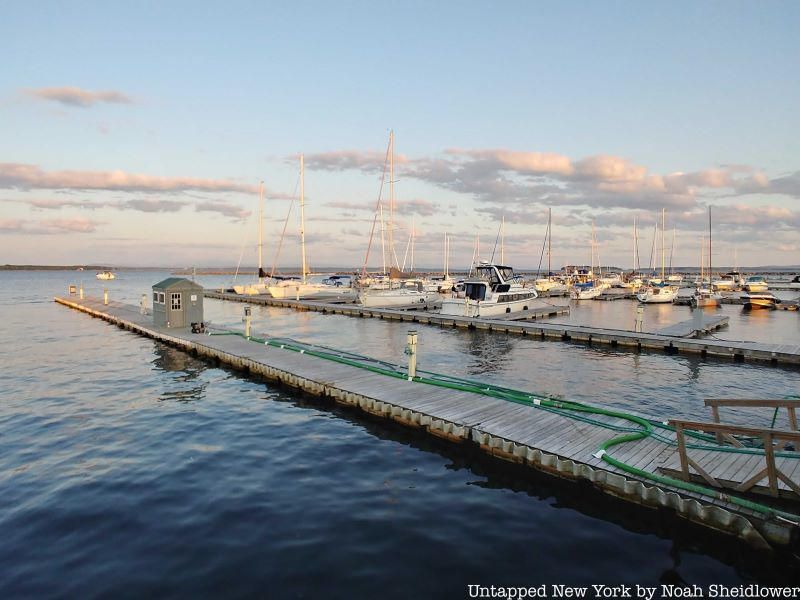
Plattsburgh is a city in Clinton County, situated on the northwestern shore of Lake Champlain just outside of Adirondack Park. Plattsburgh is the main commercial hub for the northern Adirondack Mountains, which are sparsely populated. The city of about 20,000 residents was the site of the War of 1812 Battle of Plattsburgh, which ended the final British invasion of the northern U.S. while American and British delegates were meeting at Ghent to negotiate an end to the war. The city also played a major role in World War I by hosting one of the largest Citizens’ Military Training Camps, as well as serving as a strategic location during the Cold War thanks to the Plattsburgh Air Force Base.
The historic city features great views of Lake Champlain at the Plattsburgh City Beach and Point Au Roches State Park, and includes museums such as the War of 1812 Museum, Champlain Valley Transportation Museum, and Kent Delort House Museum. Plattsburgh also houses many historical properties, including the Old Stone Barracks built in 1838, the Winslow–Turner Carriage House, the W. W. Hartwell House & Dependencies, and the 1850 House at 56 Cornelia Street. Plattsburgh offers some of the North Country’s best modern and ethnic restaurants, including Himalaya Restaurant, Twisted Carrot, Sip, and Aleka’s.

While most people on route to Canada drive straight through the village of Champlain, the North Country village to the east called Rouses Point is a quaint and historic destination right on Lake Champlain. The village of about 2,200 takes its name from Jacque Rouse, a French Canadian soldier who fought alongside American forces during the American Revolution. The village was first settled by Canadian refugees who were given tracts of land for their services in the war, and reportedly Rouses Point was the first port-of-call for the second commercial steamboat in the world. The village was an important economic center located just a mile south of the Canadian border, as well as a crucial stop on the Underground Railroad.

Much of the action in Rouses Point is centered around Lake Street, which features many waterfront homes. Rouses Point contains the remains of Fort Montgomery on Lake Champlain, as well as a historic Amtrak station. Montgomery Street Waterfront Park offers pristine views of the lake. Restaurants in the village include Lakeside Coffee, Casa Capitano, and Sandy’s Deli.

The hamlet of Schroon Lake in the town of Schroon is a lakeside community of about 800 residents in Essex County. Schroon Lake is located a few miles from Paradox Lake, connected by the Schroon River. Schroon Lake is thought to have been quite a violent location in the Colonial period since it served as the boundary between New York and New France. Schroon Lake is located near Crown Point, a fort built in 1759 during the French and Indian War about 15 miles north of Fort Ticonderoga. Schroon Lake became a popular tourist spot for travelers along the Adirondack Northway traveling to Montreal. Schroon Lake was the location of Schroon Manor, which was the site of the film Marjorie Morningstar.
Schroon Lake is a popular fishing spot in the North Country, easily accessible from the Town Beach. The Strand Theater is a staple of the community, as is the Seagle Festival featuring musical theater and opera productions. Hiking at nearby Severance Mountain is popular among nature lovers. Restaurants in the community include Pitkins Restaurant, Sticks & Stones Wood Fired Bistro, and Flanagan’s Pub & Grill.
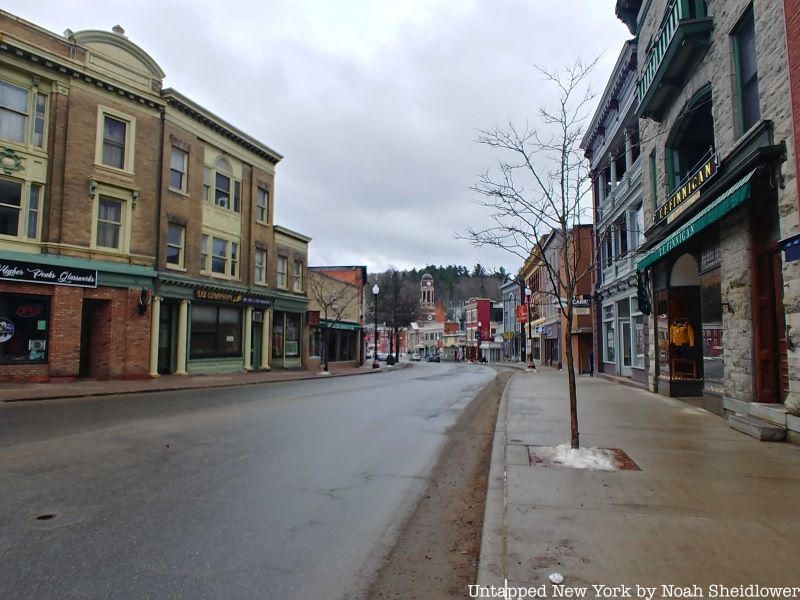
The village of Saranac Lake, located about 15 minutes west of Lake Placid, is split between Essex and Franklin Counties and is home to a bit over 5,000 residents. The village name is perhaps misleading, though, since no parts of the village touch the shores of Saranac Lake; instead, the main commercial center of the village is located on Lake Flower. The village, previously inhabited by Iroquoian-speaking peoples, was first inhabited by white Americans in 1819, developing as a hub for hunters and woodsmen.
In 1876, Dr. Edward Livingston Trudeau settled in the village to treat his tuberculosis, discovering that the fresh air improved his health. He founded the Adirondack Cottage Sanitarium, and shortly after, the village became one of the premier spots for TB treatment, even attracting people like Robert Louis Stevenson. The President of the Philippines Manuel Luis Quezon even sought TB treatment in Saranac Lake, where he later died.
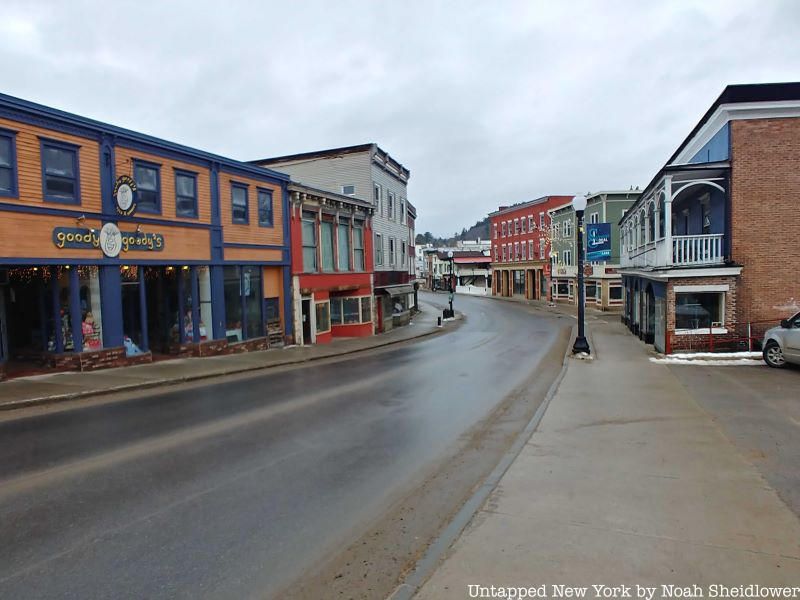
Many buildings in the downtown date back to the time of TB treatments, many including outdoor porches for patients. A few dozen properties are included on the National Register of Historic Places, including Knollwood Club where Albert Einstein often stayed, cure cottages including Little Red, the Dr. Henry Leetch House, and Pomeroy, and the Berkeley Square Historic District.
The village features many art galleries, the only year-round professional theater in the Adirondacks, the Adirondack Carousel, and the Saranac Laboratory Museum. Since 1897, the village has put on a 10-day winter carnival often considered one of the largest in the world. Popular restaurants include Bitters & Bones, The Left Bank Cafe, Fiddlehead Bistro, and Blue Line Brewery.

Perhaps the most recognizable spot in the Adirondacks and North Country, Lake Placid is a village of just 2,300 people that makes up the Tri-Lakes Region with Saranac Lake and Tupper Lake. Lake Placid hosted both the 1932 and 1980 Winter Olympics, as well as the 1972 and 2023 Winter Universiades.
Lake Placid was first developed for iron ore mining, and abolitionist John Brown purchased land in nearby North Elba after hearing about the philanthropy of resident Gerrit Smith. Brown was buried on his farm, near where a “Freed Slave Utopian Experiment” of Timbuctoo was established. By 1921 Lake Placid had a ski jump and speed skating venue, attracting international attention and ultimately that of the Olympics committee. The village is especially remembered as the site of the Miracle on Ice, when American college students and amateurs upset the Soviet national ice hockey team.
In addition to the John Brown Farm and Gravesite, the Mount Van Hoevenberg Olympic Bobsled Run is listed on the National Register of Historic Places. Skiing is popular at nearby Whiteface Mountain, while fly fishing attracts visitors to Ausable River. The Lake Placid Olympic Museum takes an in-depth look into the two Winter Olympics in the village, and ice skating is popular at the complex. Downtown Lake Placid is quite touristy, but popular restaurants along Main Street include Generations, Salt of the Earth Bistro, Dancing Bears Restaurant, and Smoke Signals.

The village of Tupper Lake in Franklin County is perhaps not as touristy as Lake Placid and Saranac Lake, but offers a small-town Adirondack feel in North Country. The village of nearly 4,000 was settled around the mid-1840s, developing as a major lumber producer. Over two-thirds of Tupper Lake’s structures burned down in an 1899 fire, but it quickly developed as a nature destination near Raquette Pond.
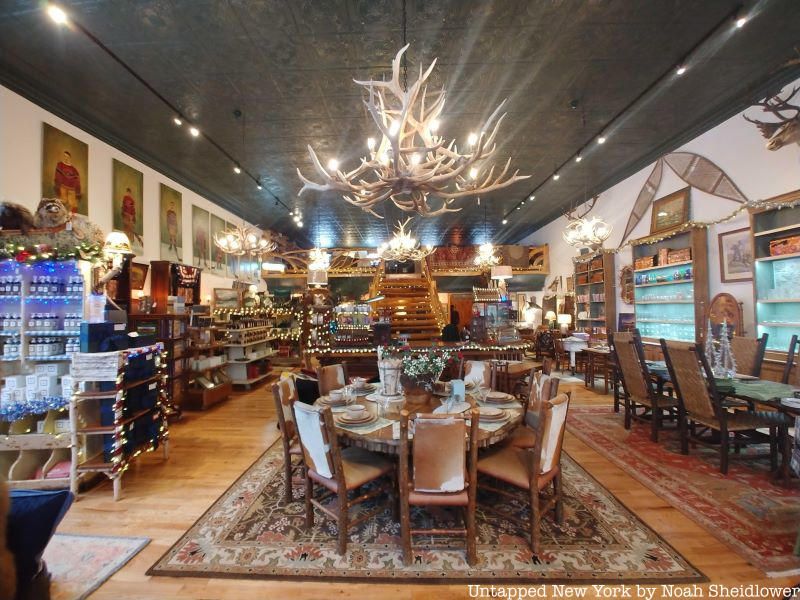
Tupper Lake is perhaps best known for the Wild Center, a natural history center that includes bridges and platforms over the campus called the Wild Walk. Little Wolf Beach and Tupper Lake Municipal Park are must-visit sites for nature watching. In addition to campgrounds around the lake, the village includes restaurants such as Amado, Well Dressed Food Company, The Swiss Kitchen, and the Washboard — offering donuts in a laundromat.

Malone is the county seat of Franklin County with a population of about 6,000. Malone is one of New York’s northernmost communities, located about ten miles from the Canadian border. Malone was first settled in 1802, but was sacked by British troops during the War of 1812. Laura Ingalls Wilder, author of Little House on the Prairie, wrote Farmer Boy about a student who attended school in Malone named Almanzo Wilder. Also strangely, Dutch Schultz, a New York City mobster, had his tax evasion trial moved to Malone, after which he was acquitted.
Malone features many National Register of Historic Places spots, including the Paddock Building, Malone Armory, Anselm Lincoln House, and Horton Gristmill. Malone is located near Titus Mountain, a popular ski site in the North Country. The nearby Akwesasne Cultural Center Library & Museum houses a library and museum about the Mohawk Nation. Malone’s downtown provides views of the Salmon River, and restaurants include Riverside Steak & Seafood, Donovan’s Steak & Ale, and Hosler’s Family Restaurant.
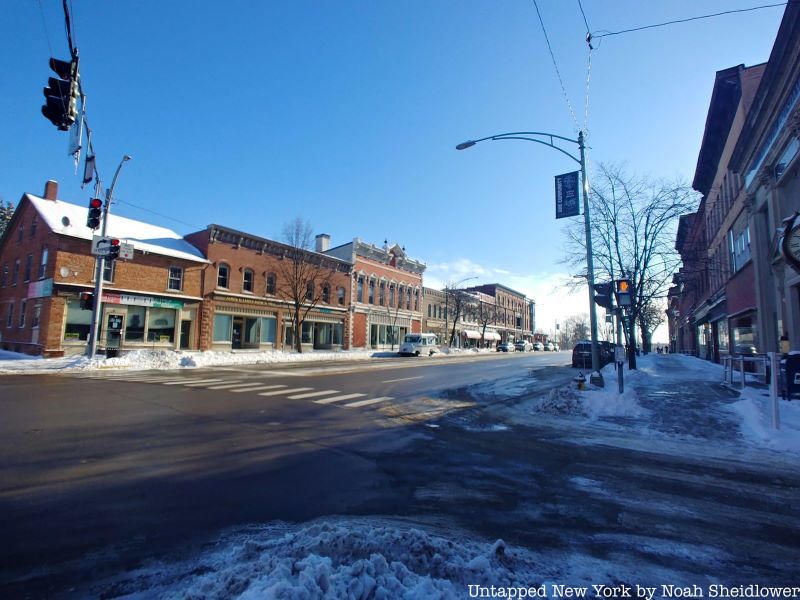
Potsdam is a village of about 9,400 residents in St. Lawrence County, home to SUNY Potsdam and Clarkson University. The village was formerly home to a settlement of St. Regis Native Americans. The village and town take their name from the discovery of reddish sandstone resembling that of Potsdam, Germany. The village quickly developed after the 1816 establishment of SUNY Potsdam, the northernmost member of the SUNY system and one of the oldest colleges in the U.S.
The village sits on the banks of the Raquette River, which can be viewed from multiple sites in the Market Street Historic District. Buildings such as the Clarkson-Knowles Cottage, Nathaniel Parmeter House, and Bayside Cemetery and Gatehouse Complex are listed on the National Register of Historic Places. Market Street features diverse businesses and restaurants, many located in historic brick buildings. These include Lee’s Hawaiian Grill, Thai Cuisine, Maxfields, and Foster the Plant Cafe.

The village of Canton, a 10-minute drive from Potsdam and also a prominent college town, is the county seat of St. Lawrence County with a population of 6,300. Canton was first settled in 1801 as “New Cairo,” and the village developed on farming and lumber. The village took its name from the Chinese city of Canton, now known as Guangzhou. Artist Frederic Remington, known for his Western paintings of cowboys and Native Americans, was born in Canton (and a museum dedicated to him is located a short drive away in Ogdensburg). St. Lawrence University was founded in Canton in 1856, followed half a century later by SUNY Canton.

Most businesses are located in the Village Park Historic District, listed on the National Register of Historic Places alongside Herring-Cole Hall, Richardson Hall, and the Old Campus Historic District of St. Lawrence University. Canton features art galleries, including the Richard F. Brush Art Gallery and Traditional Arts in Upstate New York (TAUNY). Nature lovers journey to Rushton Falls and the Grasse River. Restaurants nearby both college campuses include Park Bros, Nola’s General Store, The Hoot Owl, and Sergi’s.
Gouverneur is a village of about 4,000 in the southwest corner of St. Lawrence County. The village was established as a summer town of Gouverneur Morris, the author of the Preamble to the U.S. Constitution and New York Senator from 1800 to 1803. Shortly after the town was established, many flocked to the area to mine marble, eventually giving Gouverneur the nickname “Marble Village.” The First Presbyterian Church was one of the largest structures built in the village, with parts constructed from local marble.
Though not very touristy, Gouverneur features a picturesque enormous roll of Pep-O-Mint Life Savers, developed by village native Edward Noble. The factory was located in Port Chester, Westchester, but the giant candy monument was given to Gouverneur, where it is now displayed in the town center. Also photo-worthy is the village’s Memorial Arch, built in 1905 with the engraved phrase “Lest We Forget.” In addition to visiting the Gouverneur Museum, visitors can dine at Casa Blanca Restaurant or New York Pizzeria.
Next, check out The Abandoned Fort at Crown Point State Historic Site on Lake Champlain!
Subscribe to our newsletter